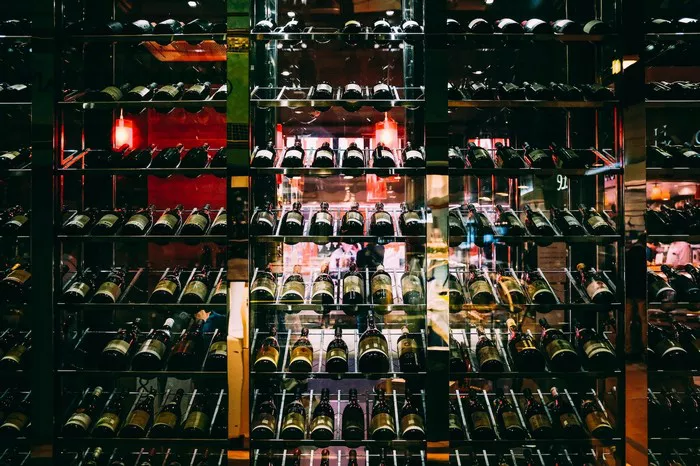France, often hailed as the epitome of wine culture, boasts a rich heritage of winemaking that dates back centuries. Its diverse landscapes, coupled with centuries of expertise, have birthed a plethora of exquisite wines that captivate connoisseurs worldwide. Among the vast array of choices, one question frequently arises: what is the most popular wine in France? To unravel this enigma, we delve into the nuances of French wine culture, exploring its regions, grape varieties, and the enduring allure of its most beloved wines.
The Essence of French Wine Culture: A Tapestry of Tradition and Terroir
French wine culture is deeply intertwined with tradition, terroir, and a profound reverence for the land. Terroir, a concept central to French winemaking, encapsulates the unique combination of soil, climate, and topography that imparts distinct characteristics to wines. This emphasis on terroir fosters a deep connection between winemakers and their land, shaping the identity of each wine-producing region.
In France, wine is not merely a beverage but a cultural emblem, embodying centuries of craftsmanship and heritage. The country’s diverse geography, ranging from the sun-drenched vineyards of Provence to the cool, misty hills of Burgundy, yields an extraordinary variety of wines. Each region boasts its own appellations, grape varieties, and winemaking traditions, contributing to the tapestry of French wine culture.
Unveiling the Charms of Bordeaux: A Global Icon
When pondering the question of the most popular wine in France, Bordeaux invariably commands attention. Situated along the banks of the Garonne River, the Bordeaux region is synonymous with prestige and refinement. Its illustrious history dates back to Roman times, and today, it stands as one of the world’s foremost wine-producing regions.
Bordeaux’s reputation rests on its exceptional red blends, crafted predominantly from Cabernet Sauvignon, Merlot, and Cabernet Franc grapes. These wines exemplify elegance and complexity, with nuanced flavors ranging from blackcurrant and plum to cedar and tobacco. Bordeaux’s classification system, established in 1855, further enhances its allure, delineating the hierarchy of its finest châteaux.
Provence: Where Rosé Reigns Supreme
While Bordeaux reigns as the pinnacle of red wine production, Provence holds court as the undisputed kingdom of rosé. Nestled in the sun-drenched landscapes of southern France, Provence evokes images of lavender fields and azure skies. Its rosés, celebrated for their pale hues and delicate flavors, have garnered a global following, especially during the summer months.
Provence’s winemaking tradition dates back over two millennia, with rosé production emerging as its hallmark. Crafted primarily from Grenache, Cinsault, and Mourvèdre grapes, Provencal rosés embody a harmonious blend of fruitiness and freshness. These wines are revered for their versatility, pairing seamlessly with a myriad of cuisines and occasions, from leisurely picnics to elegant soirées.
See Also: Exploring Substitutes for White Port Wine: A Comprehensive Guide
Champagne: The Jewel in France’s Crown
No exploration of French wine culture would be complete without a toast to Champagne, the epitome of celebration and luxury. Nestled in the rolling hills of northeastern France, the Champagne region is renowned for its sparkling wines, synonymous with festivity and refinement. Champagne’s effervescence captivates the senses, offering a symphony of bubbles that dance upon the palate.
Crafted through the méthode champenoise, Champagne undergoes a secondary fermentation in the bottle, imparting its signature fizz and complexity. While often reserved for special occasions, Champagne’s appeal transcends mere ceremony, embodying the artistry and craftsmanship of its vignerons. From the crisp Brut to the opulent Blanc de Blancs, Champagne offers a spectrum of styles to suit every palate.
The Enigmatic Allure of Burgundy: A Testament to Terroir
In the heart of France lies Burgundy, a region revered for its enigmatic Pinot Noir and Chardonnay wines. Burgundy’s winemaking tradition is steeped in history, with vineyards meticulously tended by generations of vignerons. Here, the concept of terroir assumes paramount importance, as each parcel of land imparts its unique imprint on the wines it yields.
Burgundy’s Pinot Noir wines epitomize finesse and complexity, with ethereal aromas of red berries, earth, and spice. Meanwhile, its Chardonnays exude elegance, balancing notes of citrus, stone fruit, and minerality. The region’s classification system, based on the concept of climats, delineates the finest vineyard sites, further enhancing Burgundy’s allure for wine aficionados.
The Legacy of Beaujolais: Nouveau and Beyond
Nestled between Burgundy and the Rhône Valley lies Beaujolais, a region celebrated for its vibrant Gamay wines. Beaujolais is perhaps best known for Beaujolais Nouveau, a young, fruity wine released annually on the third Thursday of November. This festive tradition has garnered global acclaim, symbolizing the arrival of the new vintage with fanfare and revelry.
Beyond Beaujolais Nouveau, the region produces a spectrum of wines, ranging from light and quaffable Beaujolais Villages to the age-worthy crus of Beaujolais. These wines showcase the Gamay grape’s exuberant fruitiness and lively acidity, offering a refreshing alternative to heavier reds. Beaujolais exemplifies the convivial spirit of French wine culture, inviting enthusiasts to embrace simplicity and joie de vivre.
Conclusion: A Toast to French Wine Diversity
In the tapestry of French wine culture, diversity reigns supreme, with each region offering its own distinct expression of terroir and tradition. While Bordeaux, Provence, Champagne, Burgundy, and Beaujolais represent just a glimpse into France’s vinous landscape, they embody the essence of its winemaking heritage.
So, what is the most popular wine in France? The answer, much like the wines themselves, is multifaceted. Bordeaux’s red blends, Provence’s rosés, Champagne’s effervescent splendor, Burgundy’s Pinot Noirs, and Beaujolais’s Gamay wines each hold sway over different palates and occasions.
Ultimately, French wine culture is not about singling out a solitary favorite but reveling in the kaleidoscope of flavors, aromas, and experiences that each bottle offers. It’s a celebration of diversity, craftsmanship, and the timeless connection between wine, land, and people—a toast to the enduring allure of la belle France. Santé!


